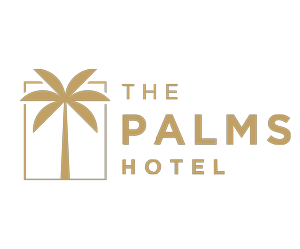The growth in the popularity and number of hotel restaurants has been rapid and global. Many hotels – in an attempt to drive and keep up with demand – relied on third-party booking platforms to generate and manage this new business.
While OTAs are not going anywhere – their reach and capacity to attract new customers is strong – a strategy that redresses the balance between the channels and focuses primarily on increasing direct bookings, is needed.
This blog post examines the most important elements of a successful direct booking strategy for hotels to drive restaurant booking revenue.


Quality is never an accident. It is always the result of an intelligent effort.


The most effective direct booking strategy should enhance direct revenue streams, collect real-time customer information to enable better-informed decisions, and reduce the proportion of bookings with cover charges over time. Hotels can better utilise their websites to help achieve this.
Many restaurants, whether part of a chain or independent, typically have their own website displaying all relevant information needed to entice potential diners. To support a direct booking strategy and maximise revenue, hotels need to have a dedicated presence on their websites that showcases their restaurants and enables customers to book directly.
From the customer perspective, this provides a smoother brand experience and allows continuity throughout a reservation. This, paired with an outstanding dining experience, will lead to more return diners. All customer and booking data coming through the hotel website will be solely owned by the hotel and could be used for targeted marketing campaigns to increase covers and revenue.
2. Implement consistent management of inventory distribution.
The economic benefits of a direct booking program are realised most when paired with a powerful front of house management plan of action that allows employees to manage all bookings – direct, online, from third party sites, phone reservations and walk-ins – alongside inventory, servers and tables in one place.
A single view of bookings from multiple sources means hoteliers can instantly access data necessary to manage distribution of inventory leading to a more tightly organised operation and fewer unnecessary losses. Inventory management today mandates that key functions are available across any computer or mobile device to give multiple team players the ability to access this vital data and make informed decisions wherever they are.
3. Create targeted special offers.
Multichannel marketing campaigns are an important element of a direct booking strategy to drive bookings and revenue.
Marketers must approach direct marketing campaigns with broad brand objectives in mind, but design specialised offers for individual restaurants as well as offers for specific days, date ranges, sittings and times. Automating the delivery of campaigns enables marketing teams to focus on the creation of meaningful campaigns.
4. Integrate and expand loyalty programs.
A strong loyalty program rewards the most frequent customers for their allegiance while enticing others to reap the benefits of more consistent patronage. A direct booking strategy capitalises on the benefits of a loyalty program by creating additional incentives that simultaneously drive direct bookings and reward frequent customers.
One of the major benefits of a direct booking strategy is greater ownership of customer data. Information can be used to create offers that are aligned precisely to a customer’s habits and to develop customised experiences to optimise spend.
5. Gather instant feedback thought timely analysis.
The collection and processing of booking and customer data means trends can be identified, missed opportunities acted on and more informed decisions can be made. With the power of technology, a direct booking strategy can capitalise on this data to present real-time analysis.
TableRes is a direct restaurant booking solution that turns customer and booking data into powerful insight and analysis. Real-time reports are generated on key metrics including occupancy, distribution of covers, food versus beverage spend, revenue per available cover (REVPAC), and revenue per occupied cover (REVPOC).
Customised dashboards can be created that display the most pertinent information to enable executives to make smarter, more informed decisions faster.
An effective direct booking strategy must contain these 5 elements to assist hotels in driving restaurant booking revenue.
To learn more, download the white paper How Hotels Can Develop a Direct Booking Strategy That Boosts Profits & Brand Affinity. To learn more about synergyhotelbooking.com and how we can help your hotel achieve a holistic booking strategy, contact [email protected].


this is test comment